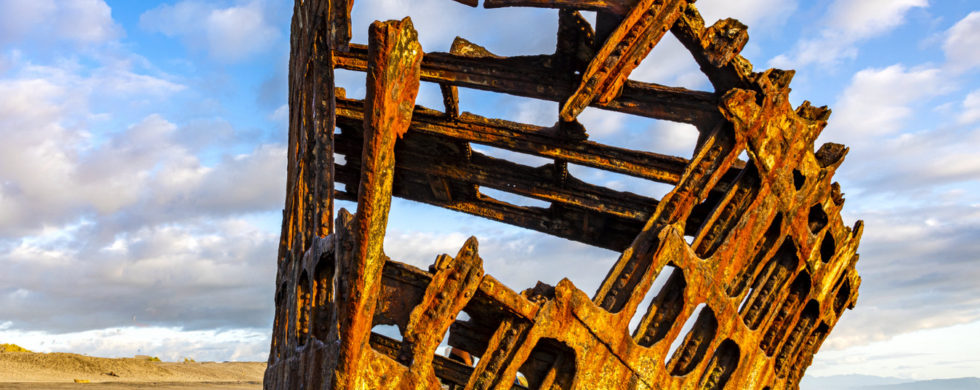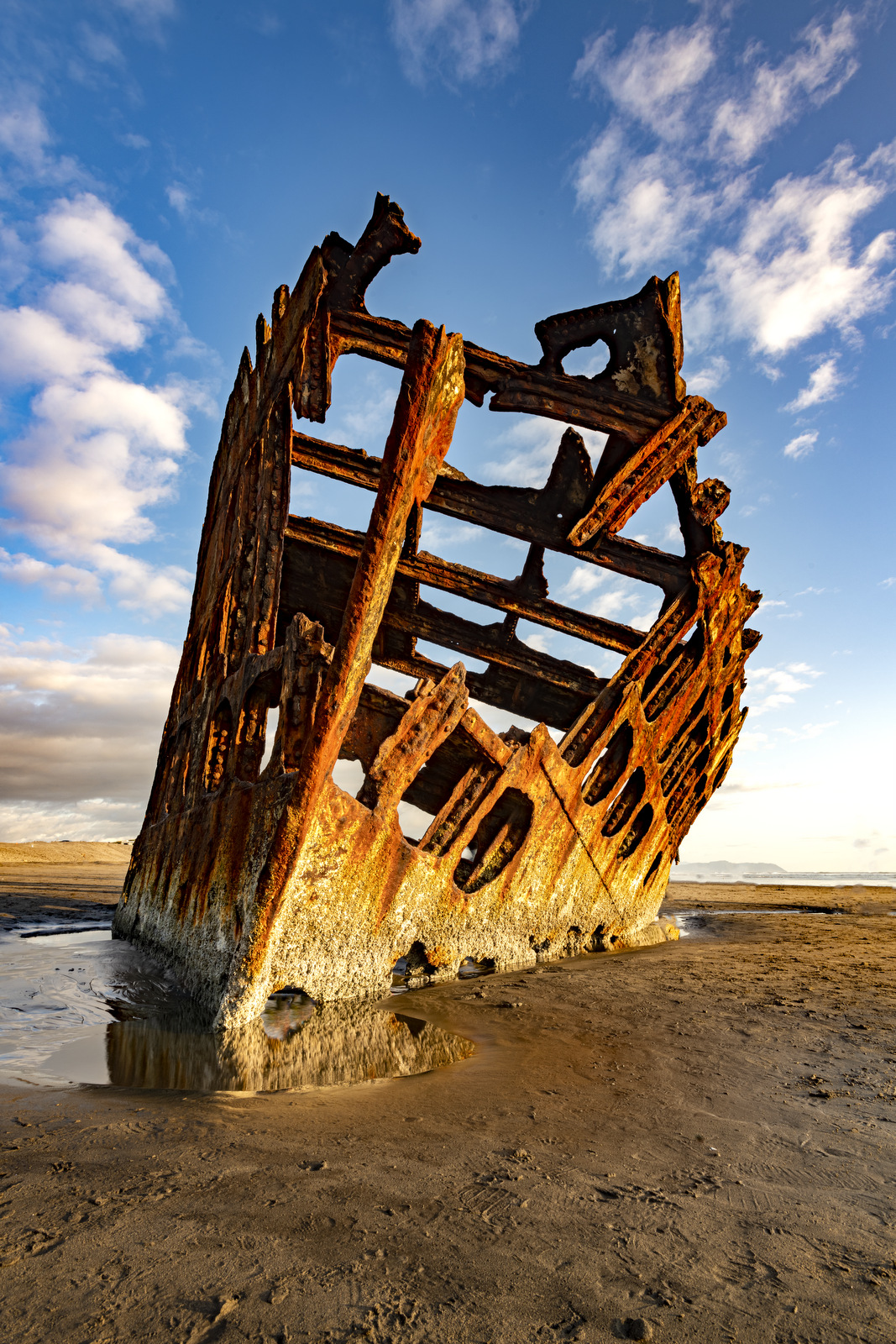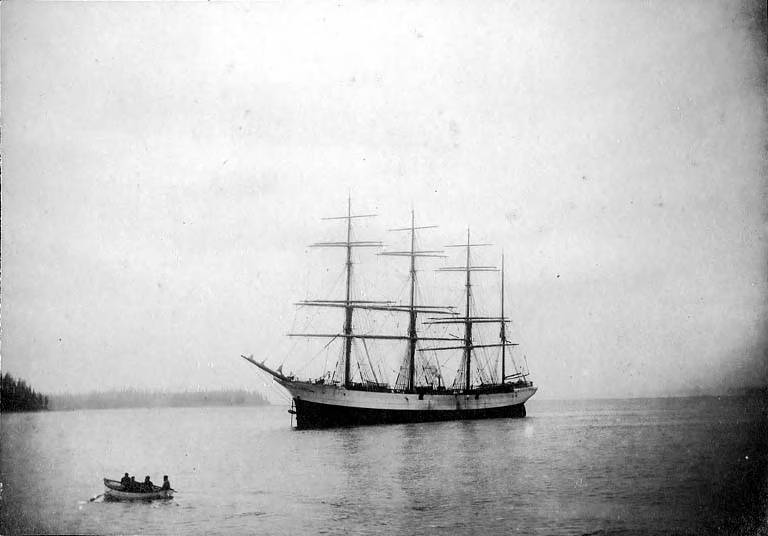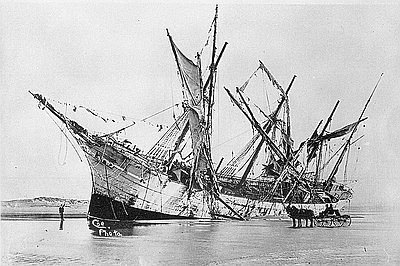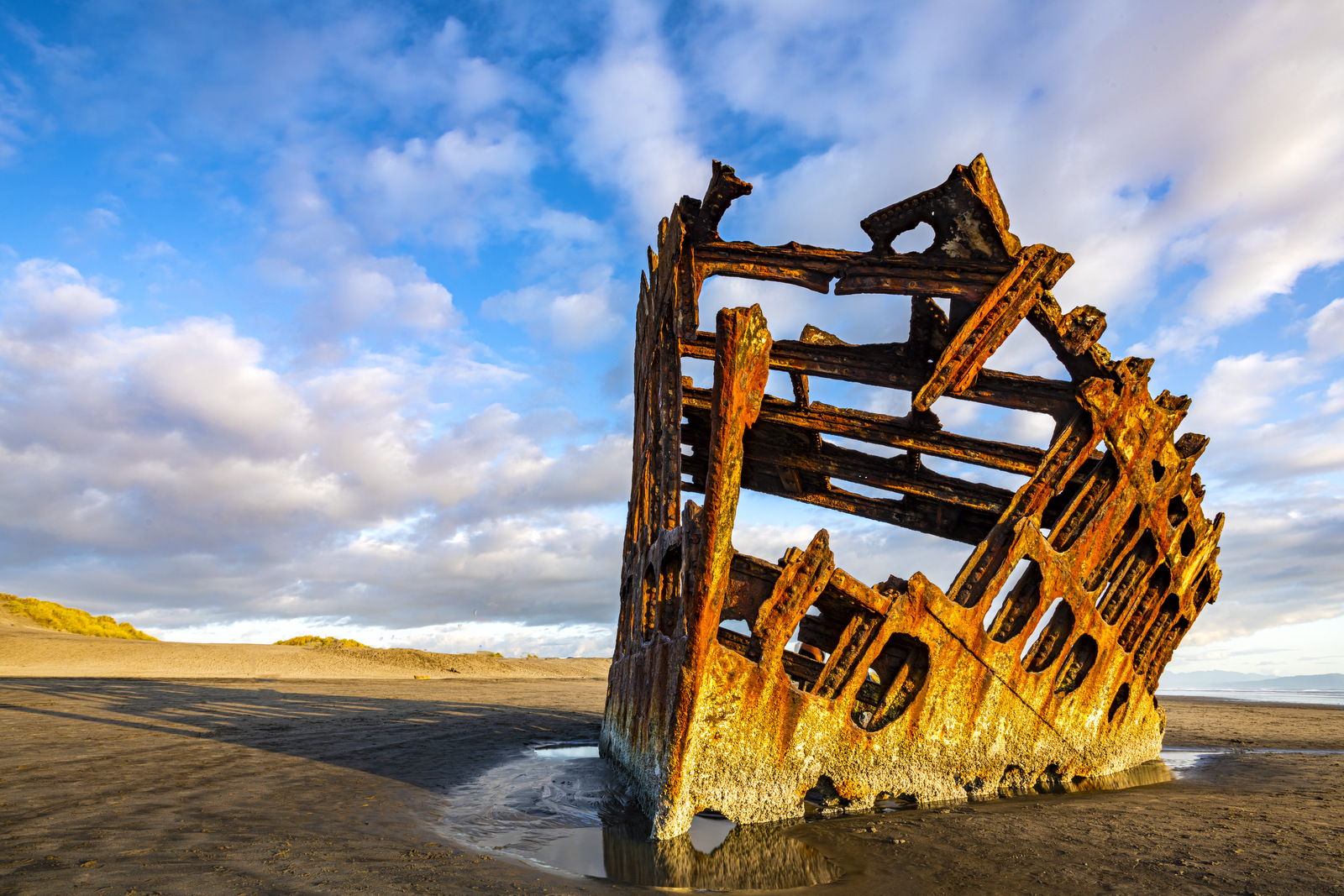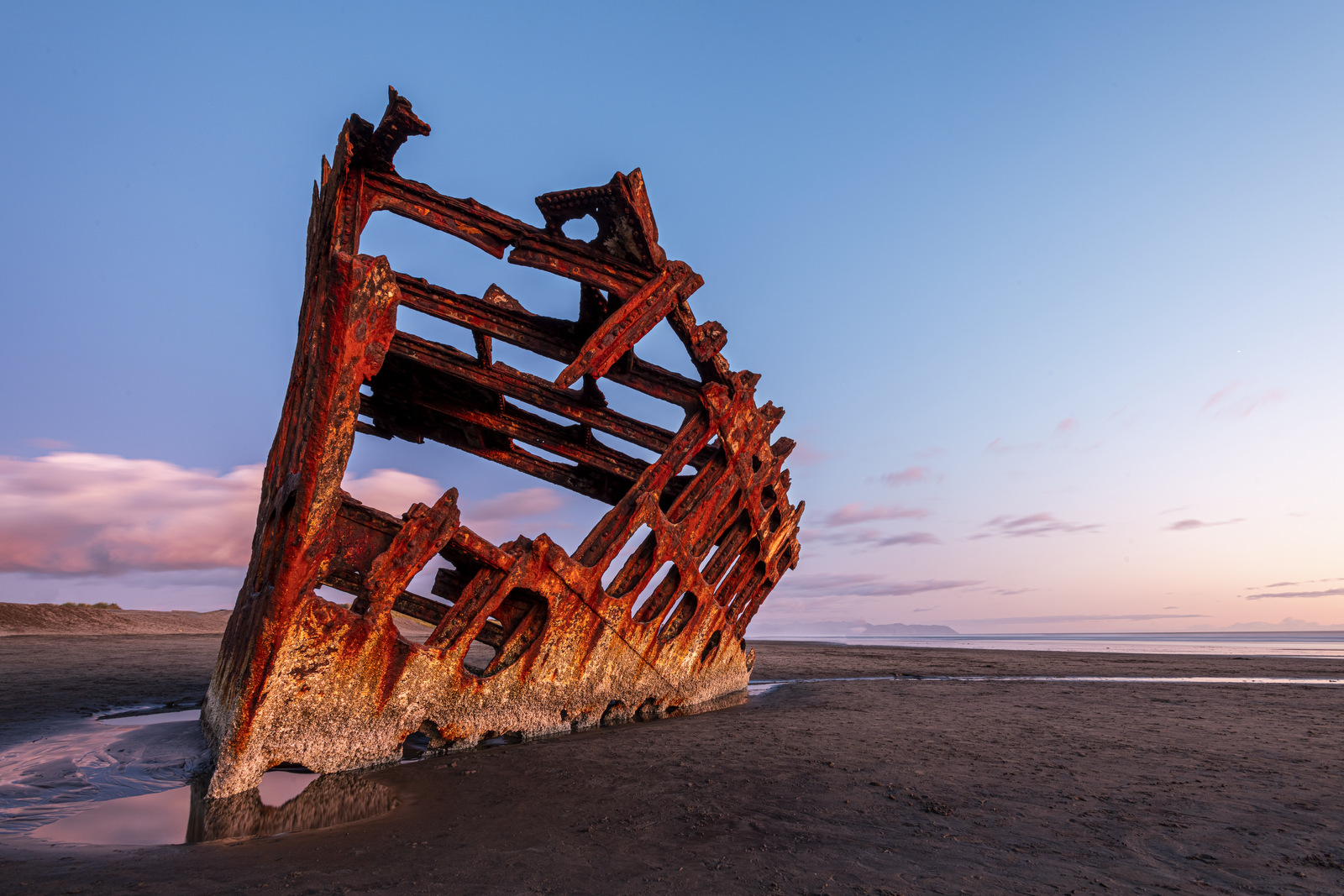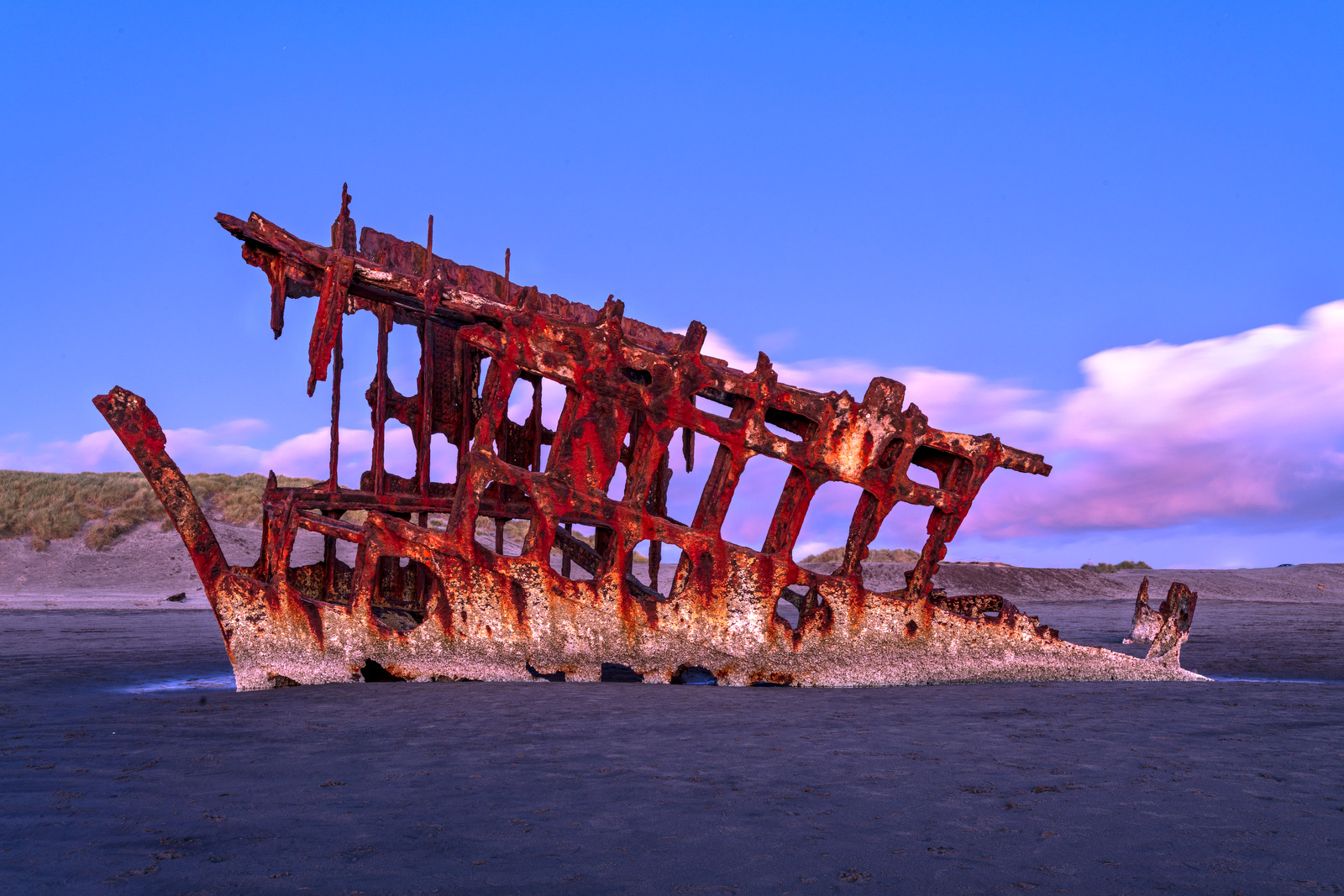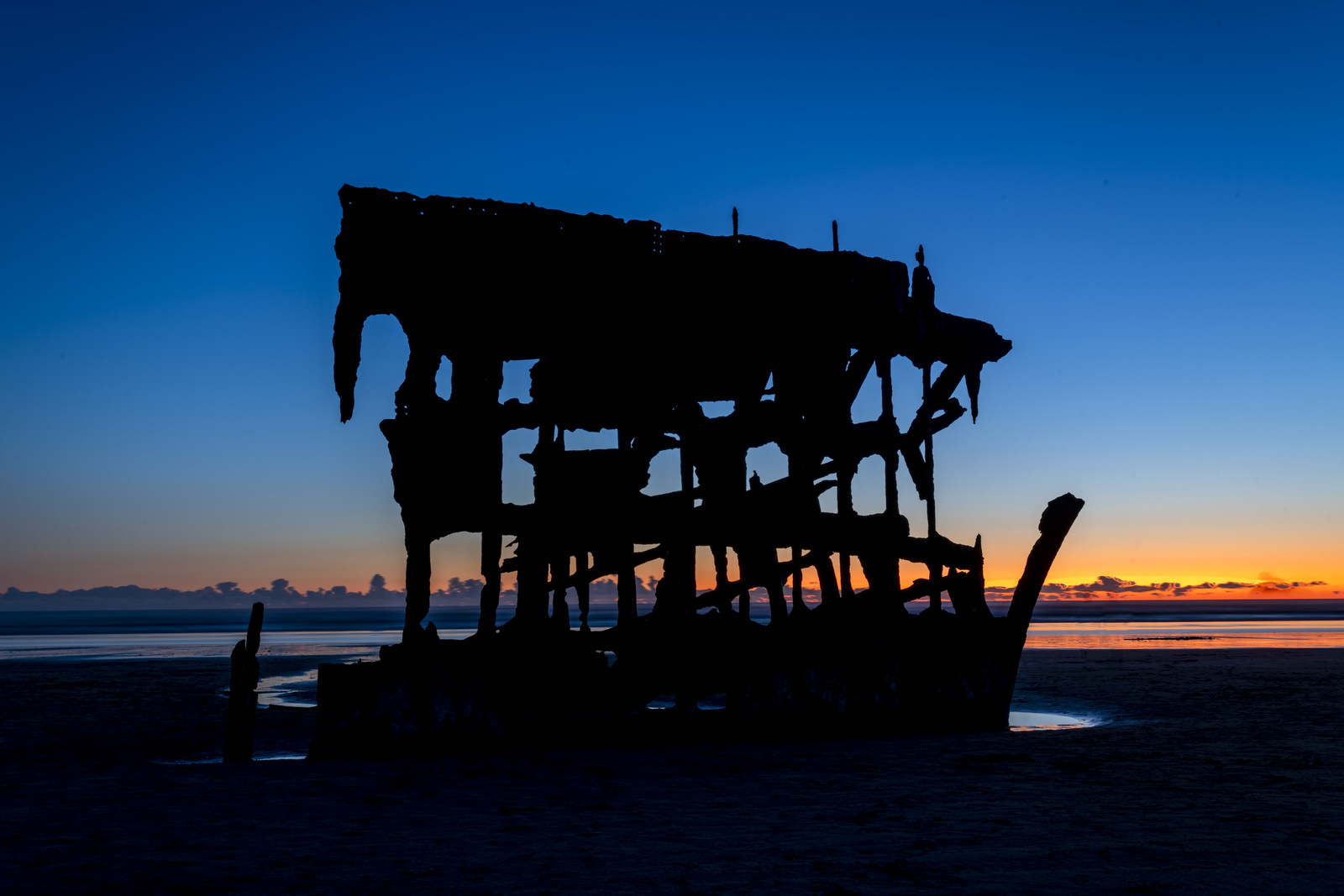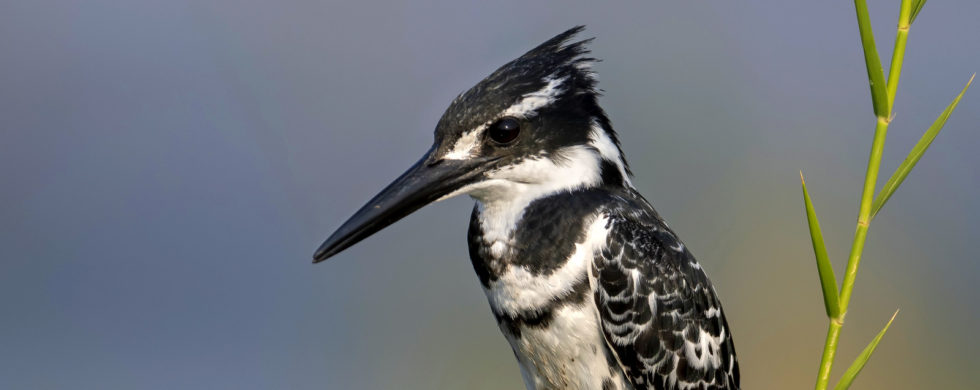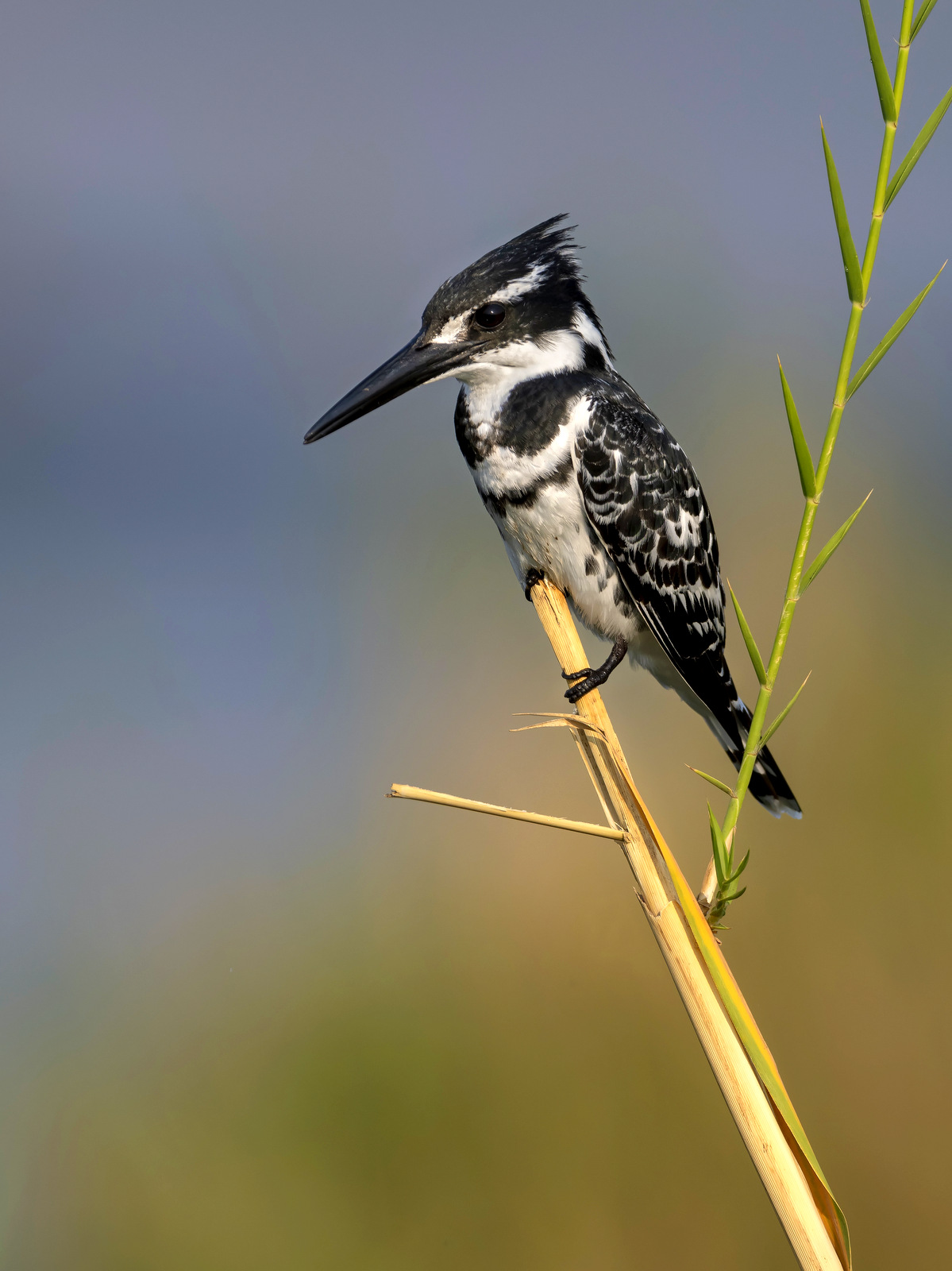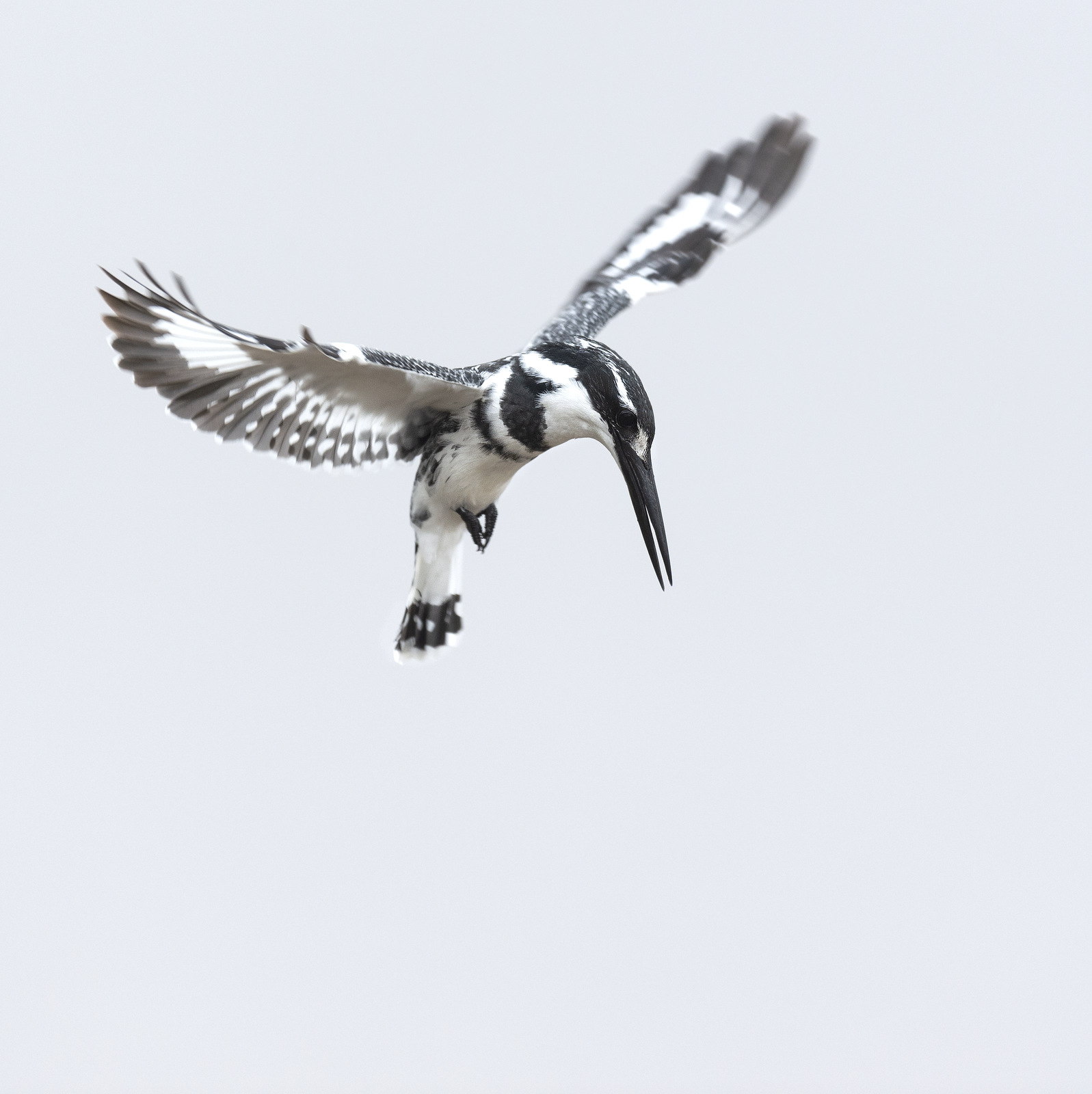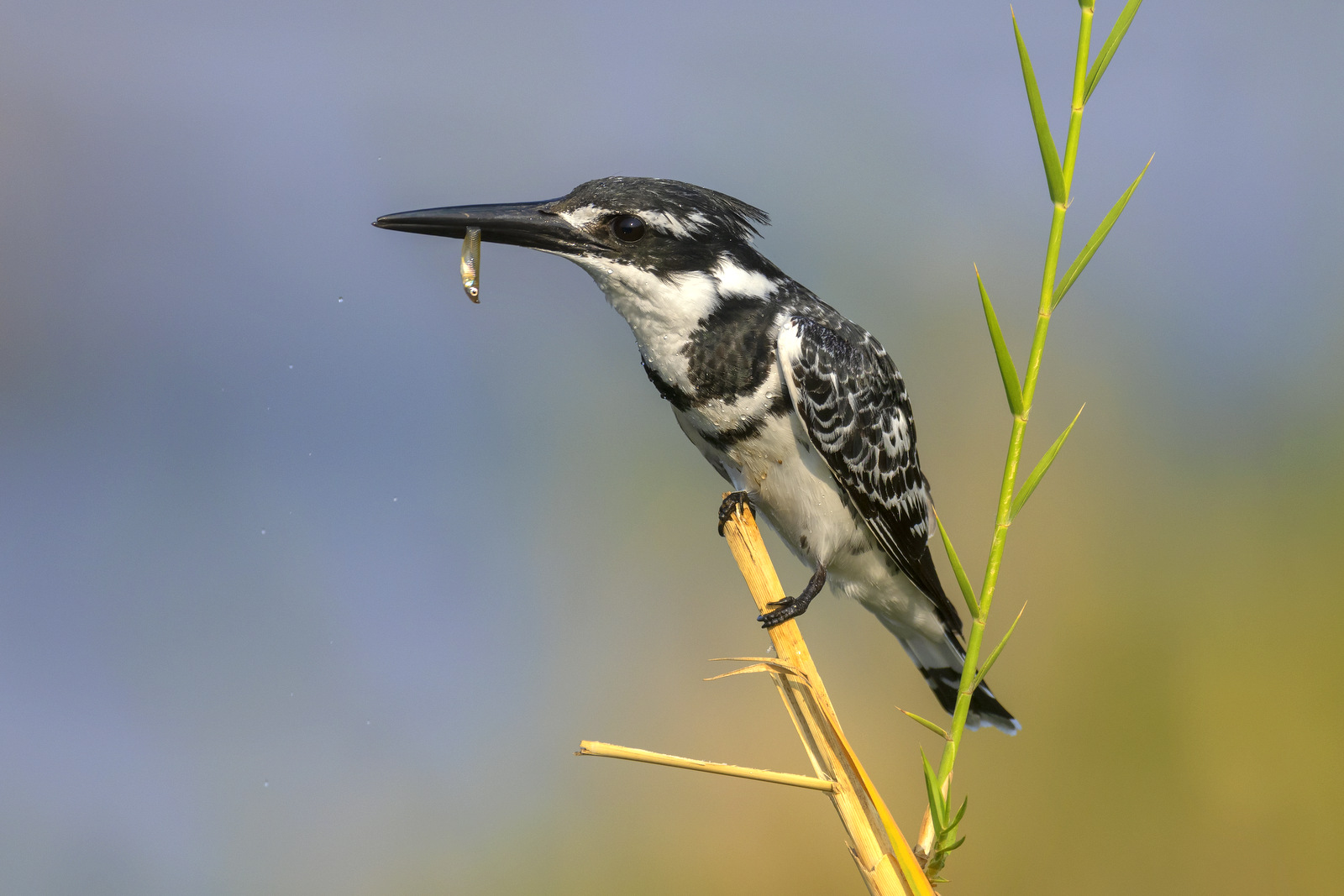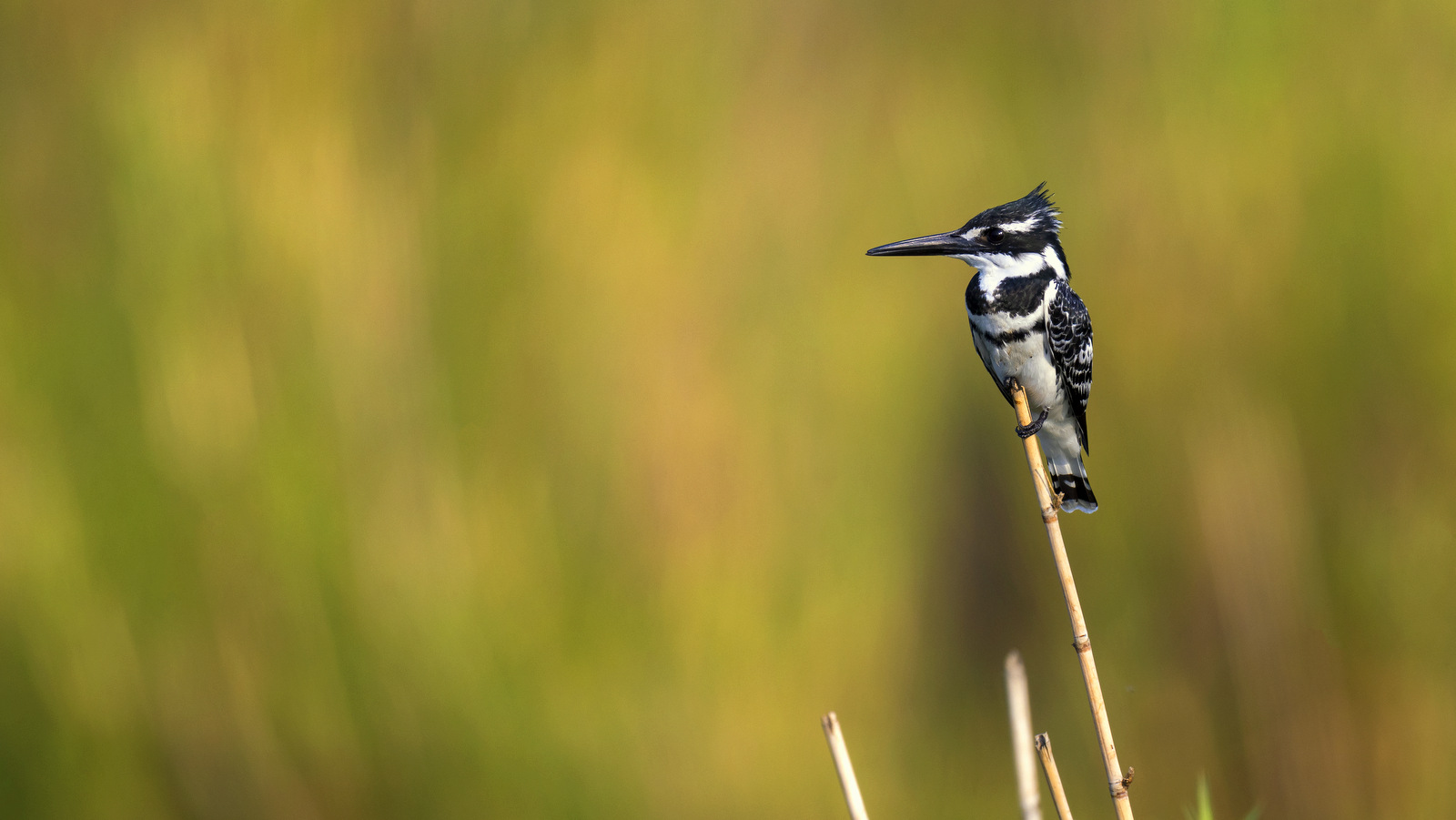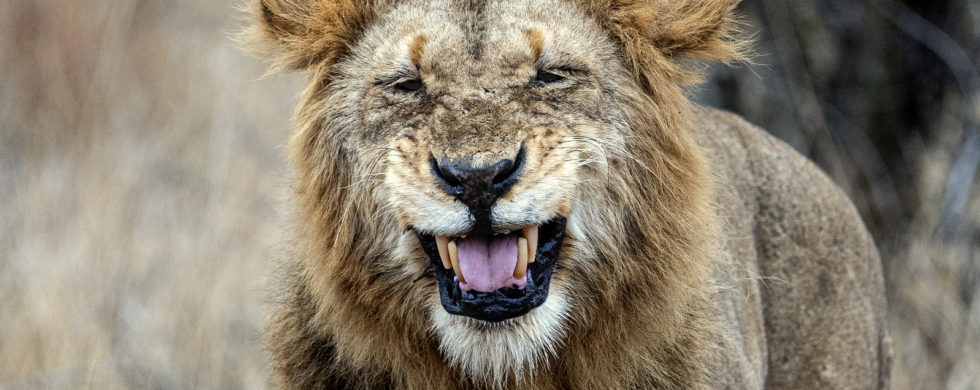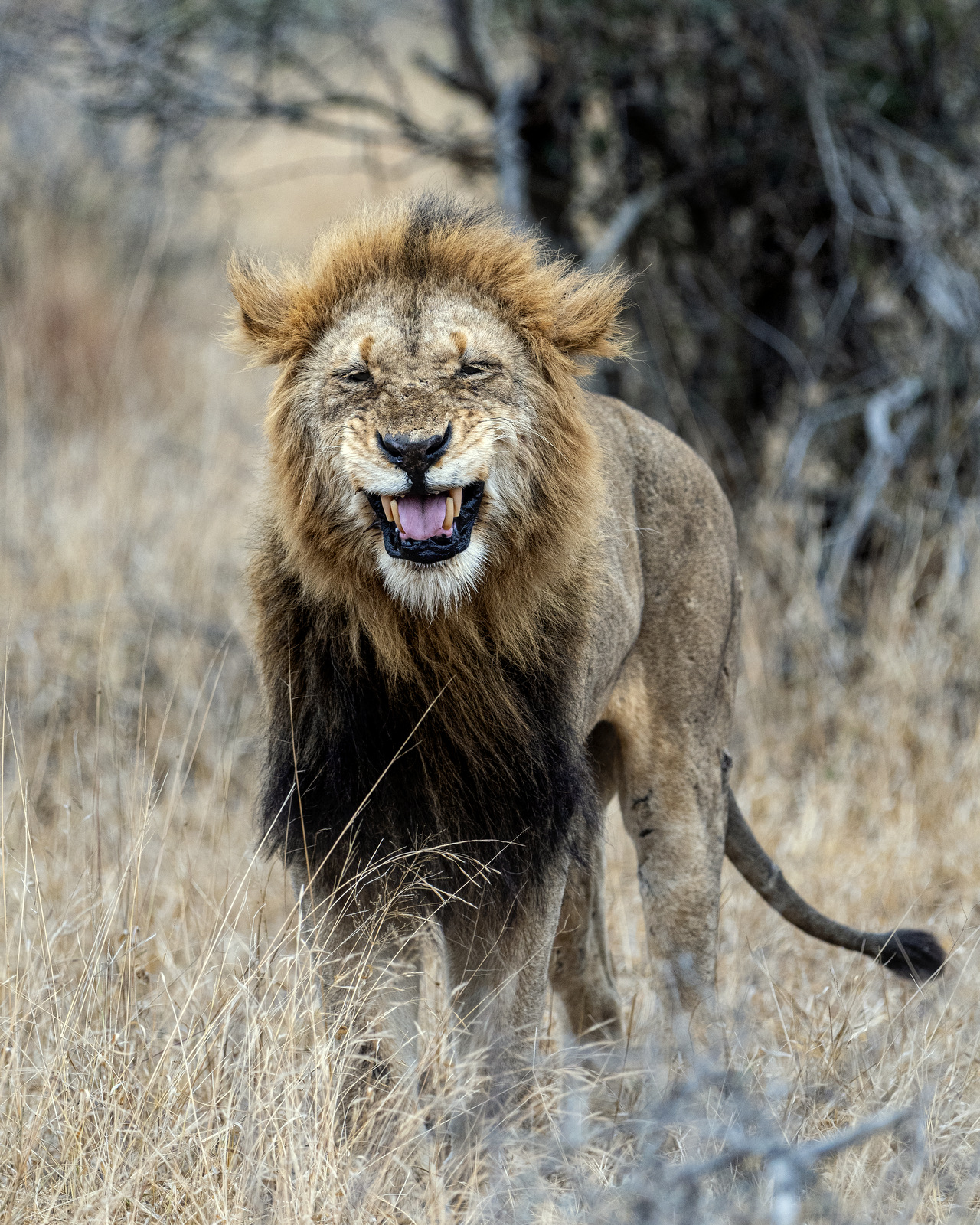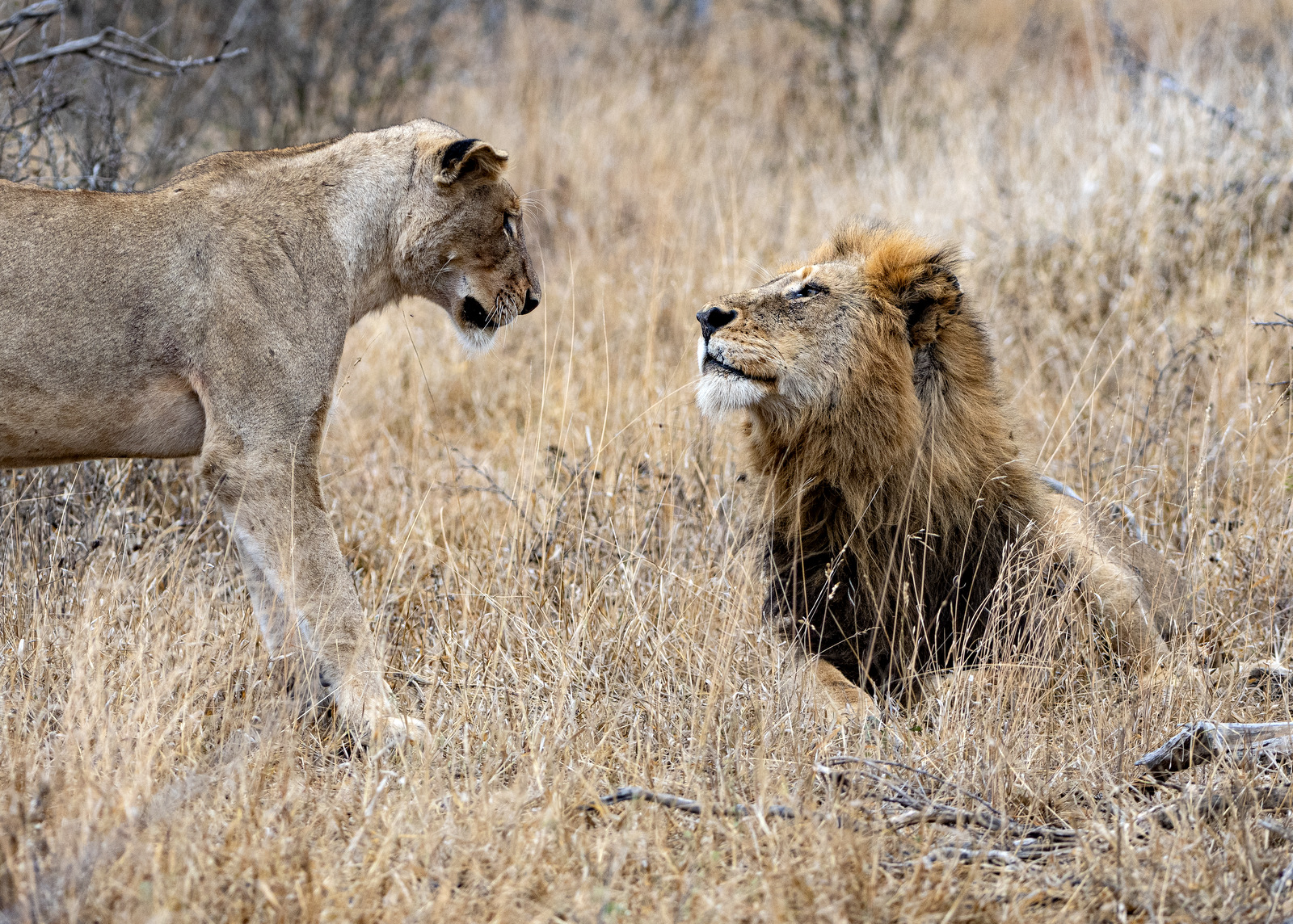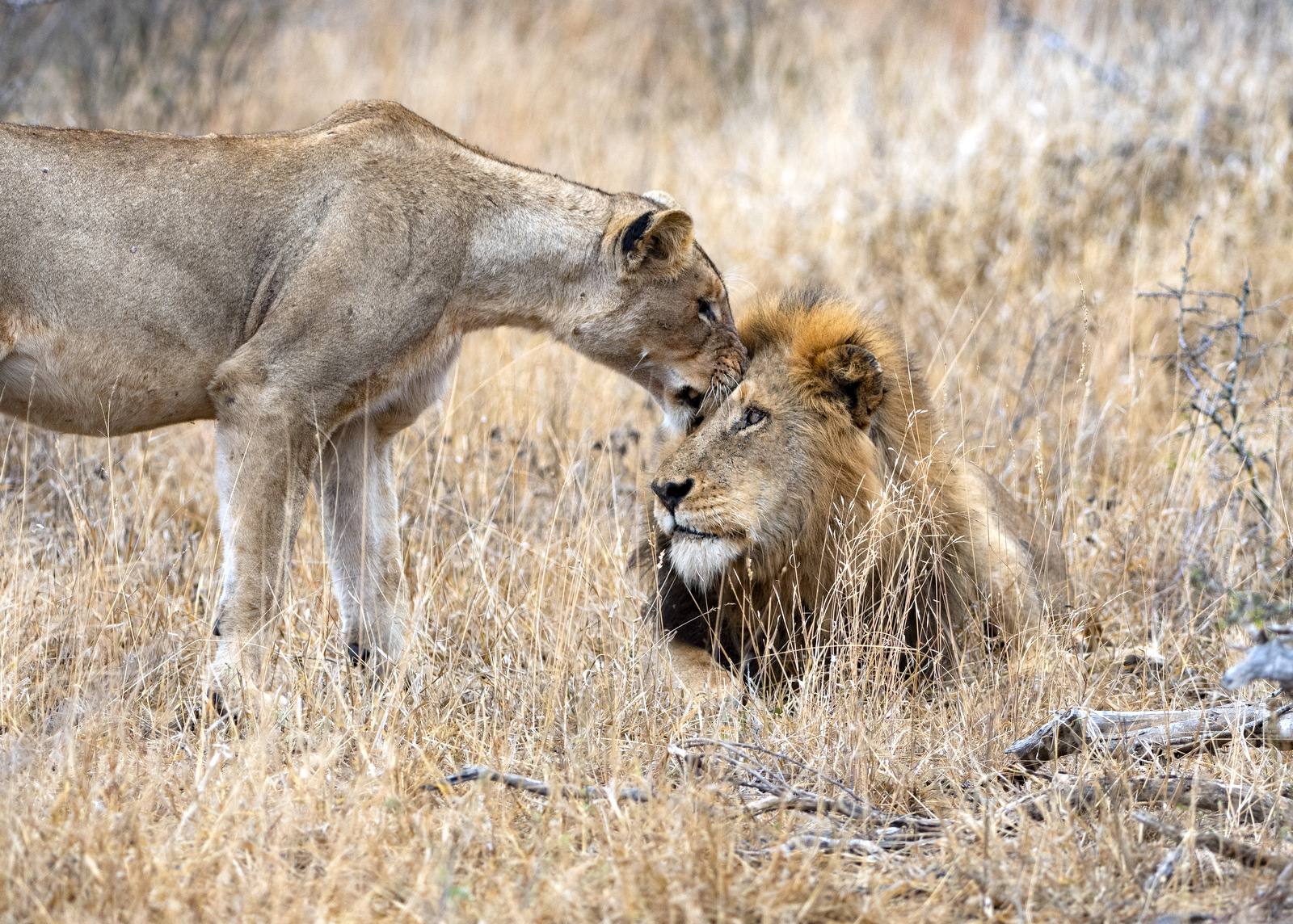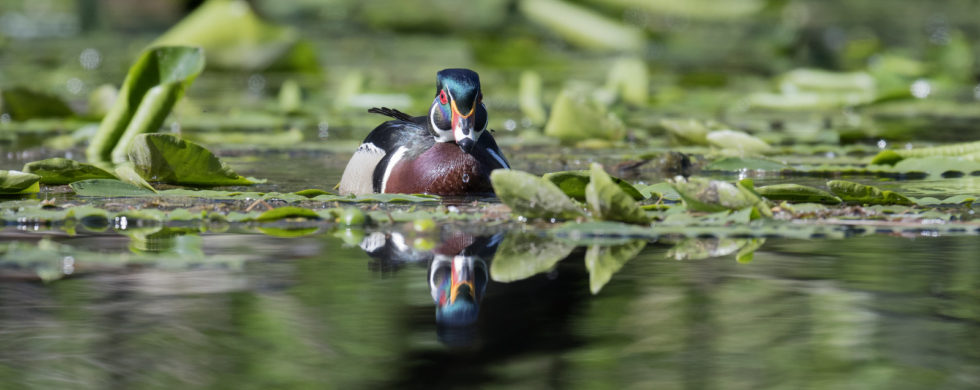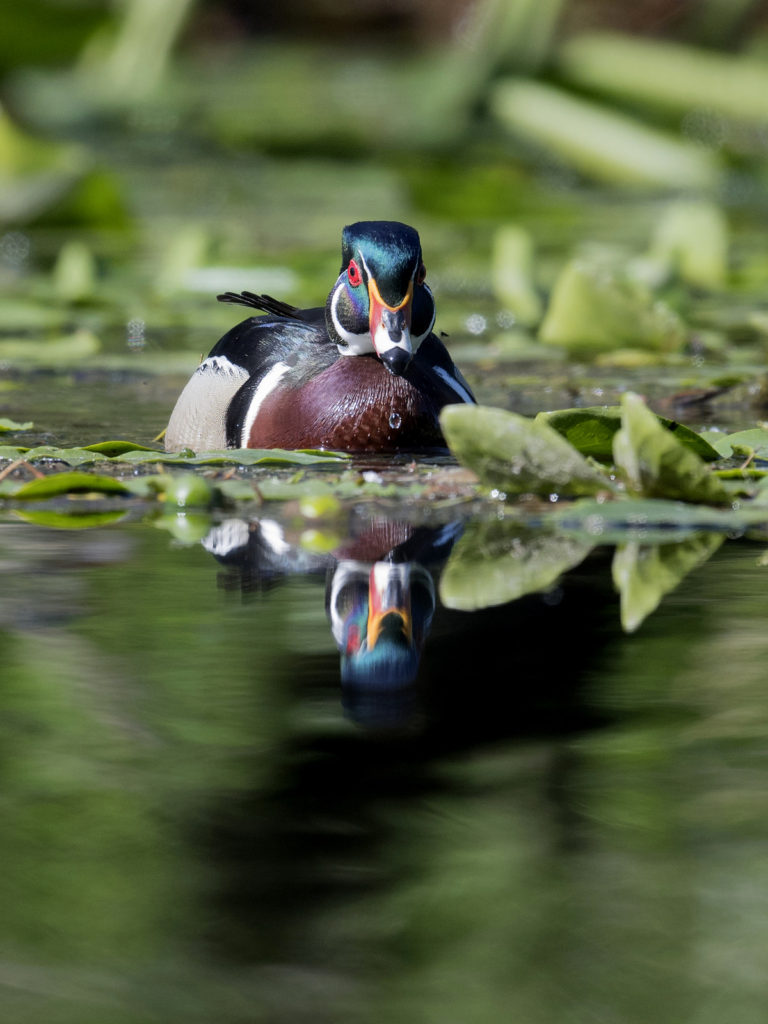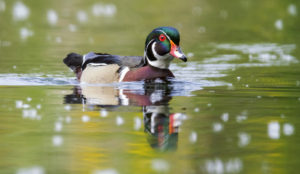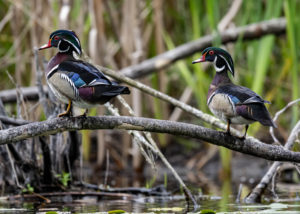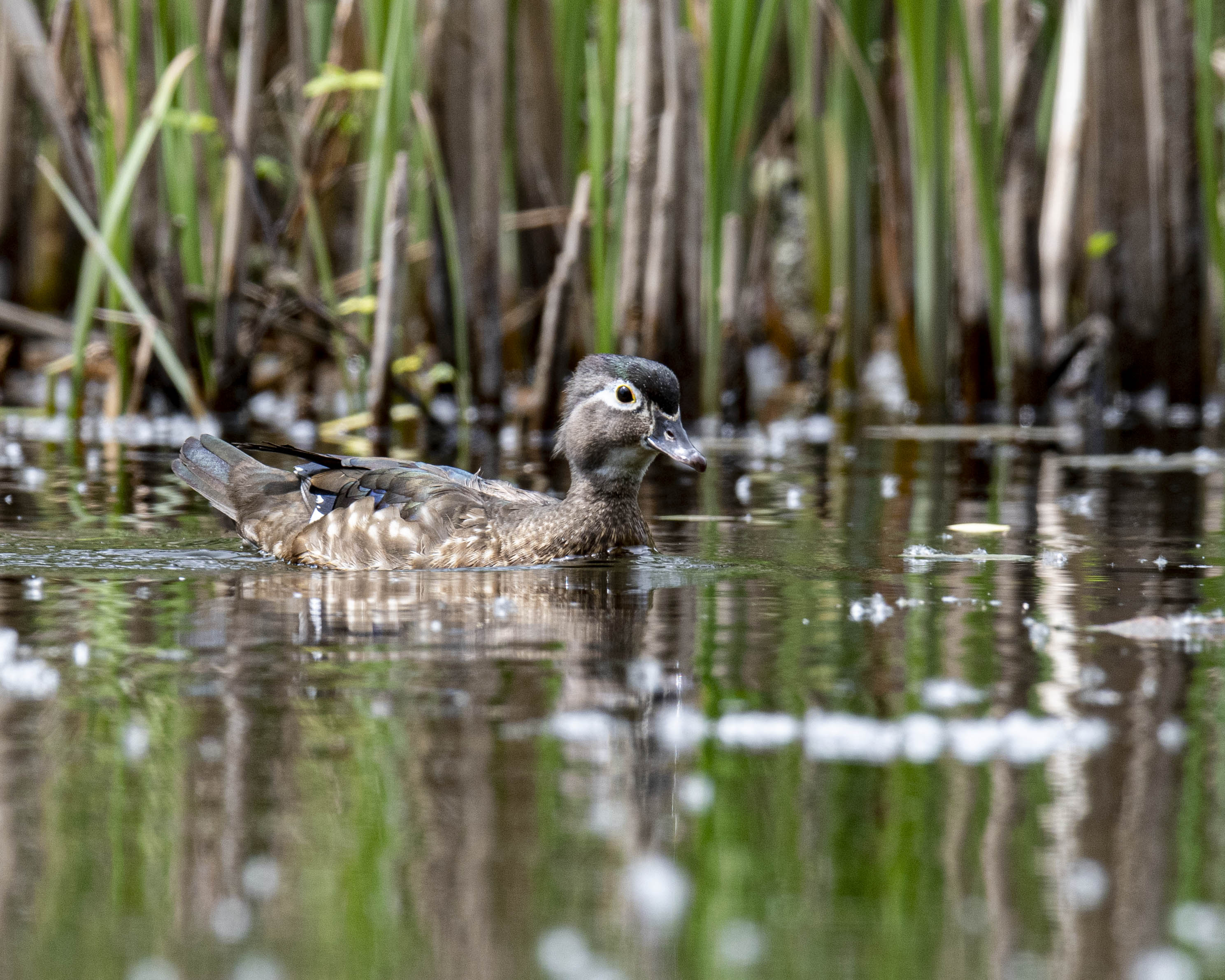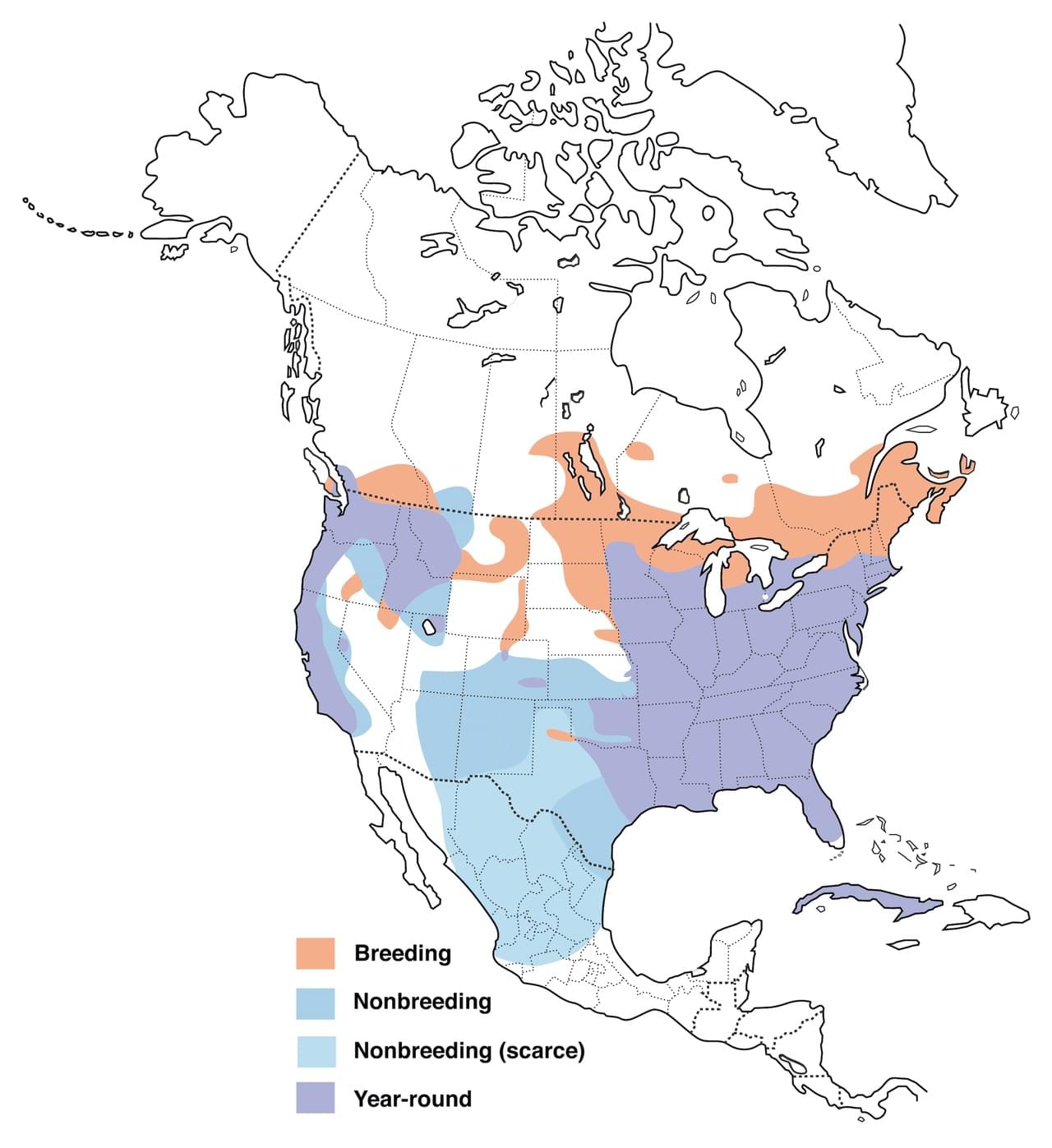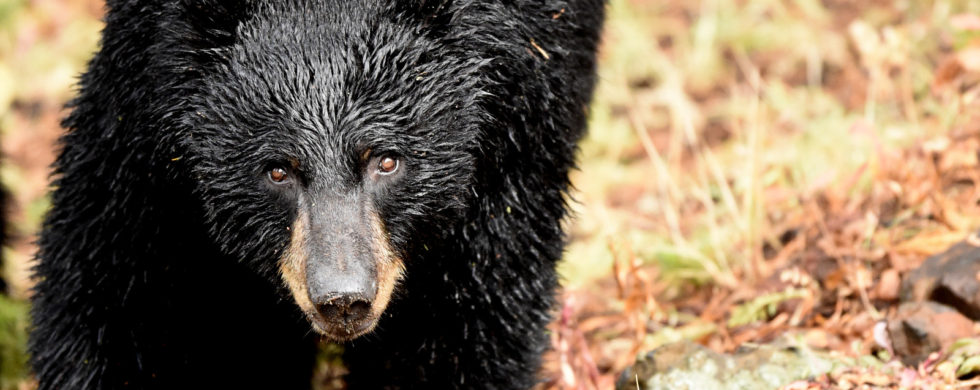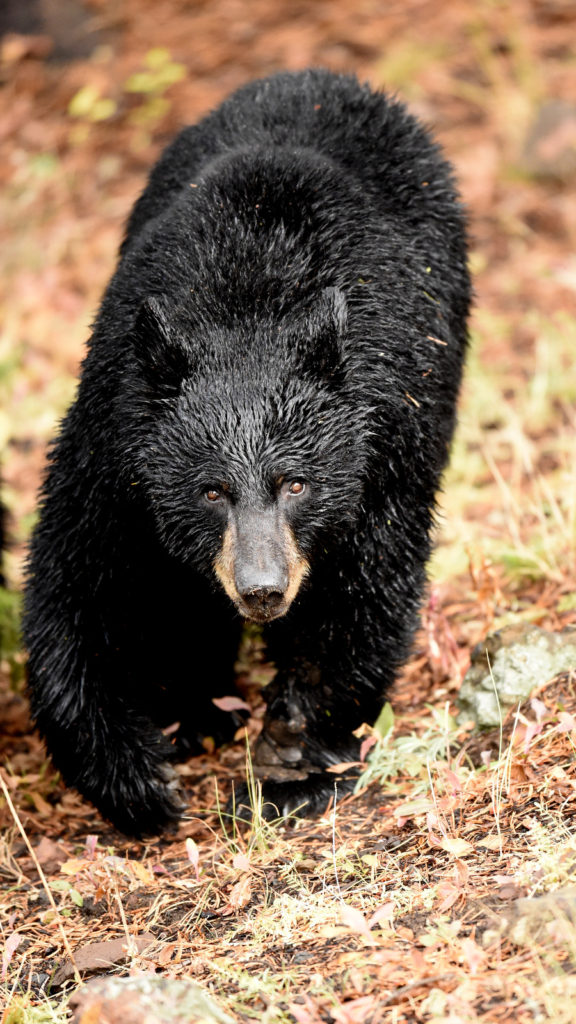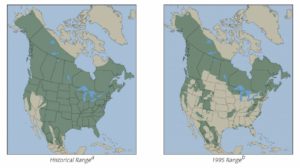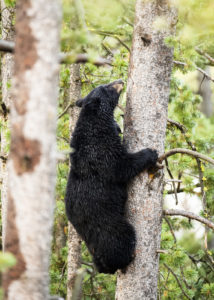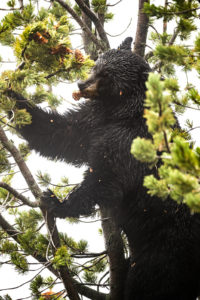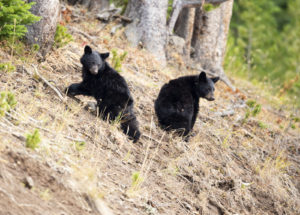30
Shot of the Month – November 2019
While this ship is clearly no longer sea worthy its rusting hull can, at least for a few more years, take our imagination on a journey back in time. The hull, located on the beach at Fort Stevens Park, is all that is left of the Peter Iredale, a four-masted steel barque that ran aground on the Oregon coast on October 25, 1906. The ship had departed from Salina Cruz, Mexico (about 60 miles south of San Diego) a month earlier bound for Portland, Oregon with 1,000 tons of ballast and a crew of 27. Nearing the end of its journey the ship encountered a fierce storm just four miles south of the Columbia River channel and was driven onto the beach in the driving winds. The force of the impact was so great that 3 of the 4 masts of the ship snapped when it hit the sand. All crew were rescued from the ship and there were no casualties.
Above we can see the Peter Iredale in all his glory — the steel ship was built in 1890 in Maryport, England and was 285 feet long. The ship was sent to Portland to pick up a cargo of wheat that would be sailed to England. Below we can see the ship not long after it ran aground.
There was little damage to the hull so initially the plan was to tow the ship back to sea. However, the recovery team had to wait a few weeks for favorable weather and during this time the ship sank deeply into the sand and it was impossible to move it. And so there it has stayed for the last 113 years.
And, in case you were wondering:
Who the heck is Peter Iredale?
He is the bloke that owned the ship. He had a shipping firm called Iredale & Porter and was a business big shot in Liverpool, England.
Did the crew screw up and cause this mess?
Well, a naval inquiry was held by the British Vice-Consulate to determine the cause of the wreck. The British Naval Court ruled that the sudden wind shift and the strong current were responsible for the stranding of the ship, and that the captain and his officers were “in no wise to blame” and in fact the captain (Captain H. Lawrence) and the crew were commended for their attempts to save the ship.
I only spent one afternoon at the wreck site and as luck would have it, there was a low tide near sunset allowing me to walk right up to the hull. Here a few images from different perspectives and as the light transformed as the sun went down.
Here is a landscape orientation as some clouds rolled in:
As the sun nears the horizon the light weakens but there is a soft pink hue (alas, we lost most of those lovely clouds):
Here we can see the full side of the remaining hull in the last light:
On that fateful day, just before leaving the beach, it is reported that the red-bearded captain stood stiffly at attention, saluted his ship, and said:
May God bless you and may your bones bleach in these sands”
He then turned and addressed his men with a bottle of whisky in his hand. “Boys,” he said, “have a drink.”
I don’t know if this salty tale is all true, but I like to believe that it is.
Ayyye! Until next month….m
Sources:
Here is a fun video on the shipwreck:
And here you can see historic images of the wreck over the last 100 years:
https://www.oregonlive.com/travel/2018/03/watch_oregons_iconic_shipwreck.html
Nikon D850, Nikon 17-35mm (@ 17 mm), f/8, 1 sec, ISO 64. HDR composite of 5 exposures (-2,-1,0,+1,+2 EV).

